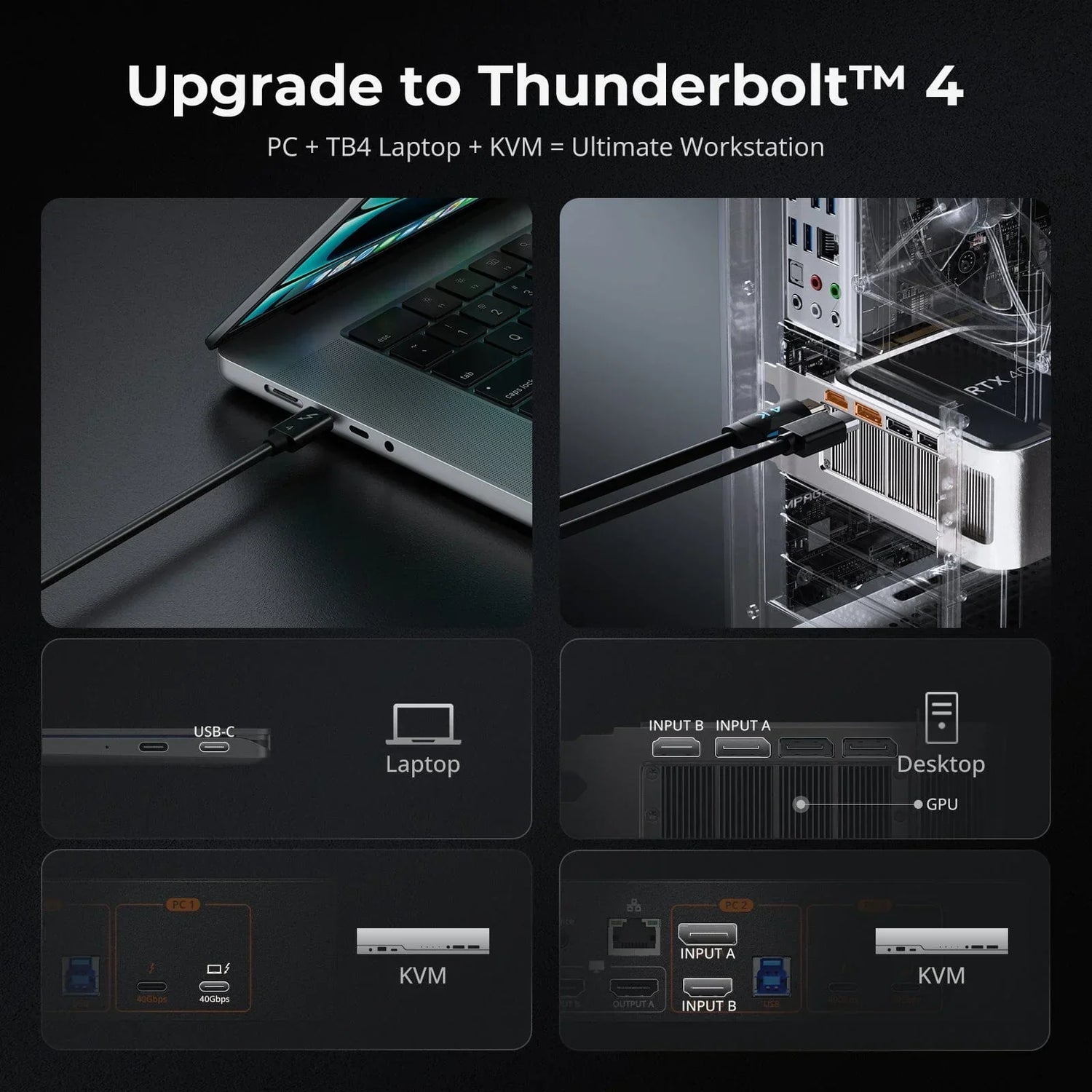In the Blast Global Finals held in Singapore, G2 Esports achieved a resounding 3-0 victory over Team Spirit, successfully claiming their third trophy of 2024. The official CSGO tournament account on YouTube has uploaded the match replay, attracting significant attention and discussion from netizens regarding G2 Esports’ outstanding performance. This impressive win not only showcased their brilliance in the match but also left fans eagerly anticipating their future competitions.
Esports continues to grow, with approximately 3 billion gamers globally as of 2023, of which PC gamers make up 20% to 30%. Gaming has become an integral part of daily life, and as games evolve, the diversity of gaming equipment increases.
Professional gamers often use various devices for different games, which can lead to cluttered setups. A KVM (Keyboard, Video, Mouse) switch simplifies the connections of these devices. Today's 8K KVM switches allow for easy switching and provide high resolution, high refresh rates, adaptive sync, and other advanced display features, ensuring a seamless gaming experience.
What is A KVM switch?
A KVM switch is a hardware device that connects multiple computers (or servers) and allows users to control them using a single keyboard, mouse, and monitor. KVM stands for "Keyboard, Video, and Mouse," which enables users to switch between different computers without the need for separate peripherals for each one.
What is Refresh Rate?
The refresh rate refers to the number of times a display updates the image per second, measured in hertz (Hz). For example, a refresh rate of 60Hz means that the monitor updates the image 60 times per second, with each update occurring every 16.66 milliseconds. A higher refresh rate results in shorter intervals between image updates, leading to smoother video playback. Common refresh rates include 60Hz, 75Hz, 120Hz, 144Hz, and 240Hz. MMO games typically use refresh rates ranging from 60Hz to 120Hz, while first-person shooter (FPS) games require higher refresh rates. In competitive FPS esports events, monitors can even reach refresh rates of 360Hz.
How Significant is the Improvement in Gaming Experience with a High Refresh Rate?
The difference in refresh rates is very noticeable in gaming experience. A 60Hz refresh rate has a switch time of about 16.67 milliseconds, while a 144Hz refresh rate is only 6.94 milliseconds. The 10-millisecond delay difference between the two can significantly impact the responsiveness of the game. In highly competitive games like FPS, every millisecond counts; firing just 1 millisecond late could mean being taken out by an opponent. Below are gameplay videos of CS2 at 60Hz and 144Hz, where the difference in smoothness between the two can be clearly felt.
60HZ Refresh Rate Gameplay Video:

144Hz can be considered the starting point for high refresh rates, and is already a significant improvement over the standard 60Hz, Zowie's XL2566K gaming monitor has a high refresh rate of 360Hz, which allows the user to experience a very smooth and dynamic image, providing an optimal gaming experience.
144HZ Refresh Rate CS2 Gameplay Video:

Choosing A High Refresh Rate KVM
To ensure high refresh rates and maintain a good gaming experience, KVM switches must have sufficient bandwidth to support high-quality video signal transmission. For example, a refresh rate of 144Hz at 4K resolution requires higher bandwidth, typically necessitating interfaces like DisplayPort 1.4 or HDMI 2.1.
The TESmart DKS202-M24 KVM switch is compatible with DisplayPort 1.4 and DSC 1.2a technology, providing excellent display performance with up to 4K resolution and 144Hz refresh rate. It is also compatible with VRR (G-Sync, FreeSync) and ALLM, ensuring smooth and clear visual effects in gaming scenarios. This switch features advanced DisplayPort 1.4 interfaces to ensure broad compatibility with most graphics cards on the market, which typically have three DP ports and one HDMI port, making stable multi-screen displays easier to achieve through DP.
It’s worth mentioning that since HDMI 2.1 technology was introduced later, many high refresh rate monitors only feature HDMI 2.0 and DisplayPort 1.4 interfaces. In such cases, DisplayPort 1.4 becomes crucial for achieving high refresh rate displays, as it provides adequate bandwidth and technical support. Therefore, the TESmart DKS202-M24 KVM switch is not only an ideal choice for multitasking but also an essential tool for gamers pursuing the ultimate gaming experience.








